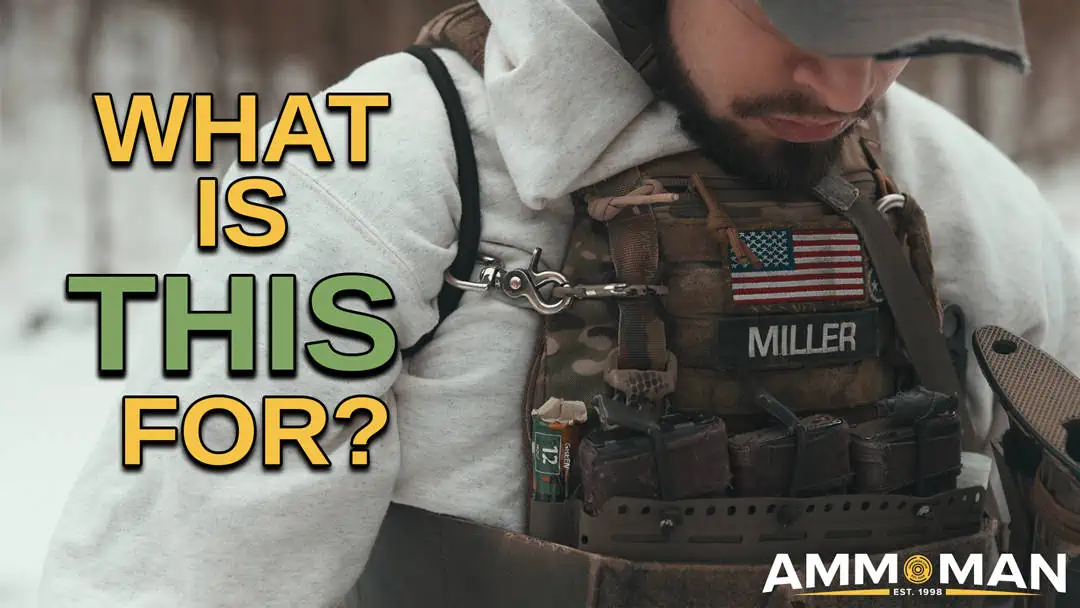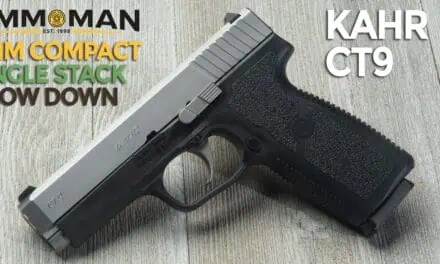“If I’m carrying a rifle, how would I also carry a shotgun?” Today, we are showcasing a popular homemade sling that Special Operations Forces and elite law enforcement units use for retention of their breaching shotguns and other specialized tools. In this article, we’ll explain why you might want to have a breaching shotgun retention sling and how to make one yourself for under $20.
This is definitely a niche topic and the context in which you might need to carry a shotgun in addition to your fighting rifle is very “mission dependent” but it does have a place. We are going to start with showing the parts you’ll need in order to assemble the sling. Then, we’ll show the complete sling and how to wear and use it. Finally, we’ll talk a little bit about the history of shotgun use in combat arms.
Want to see it in action? Check out the video below:
Breaching Shotgun Retention Guide
- Materials
- Making the sling
- How to wear and use
- A Brief History of shotgun use in combat
Materials for the Sling
All you’ll need in order to build your own retention sling is a few parts from the hardware store. The project shouldn’t cost you more than $15 in materials and about 10 minutes to make.
- 3 foot Bungee cord x1
- Grommet carabiner x1
- “Lobster” style keychain clasp x1
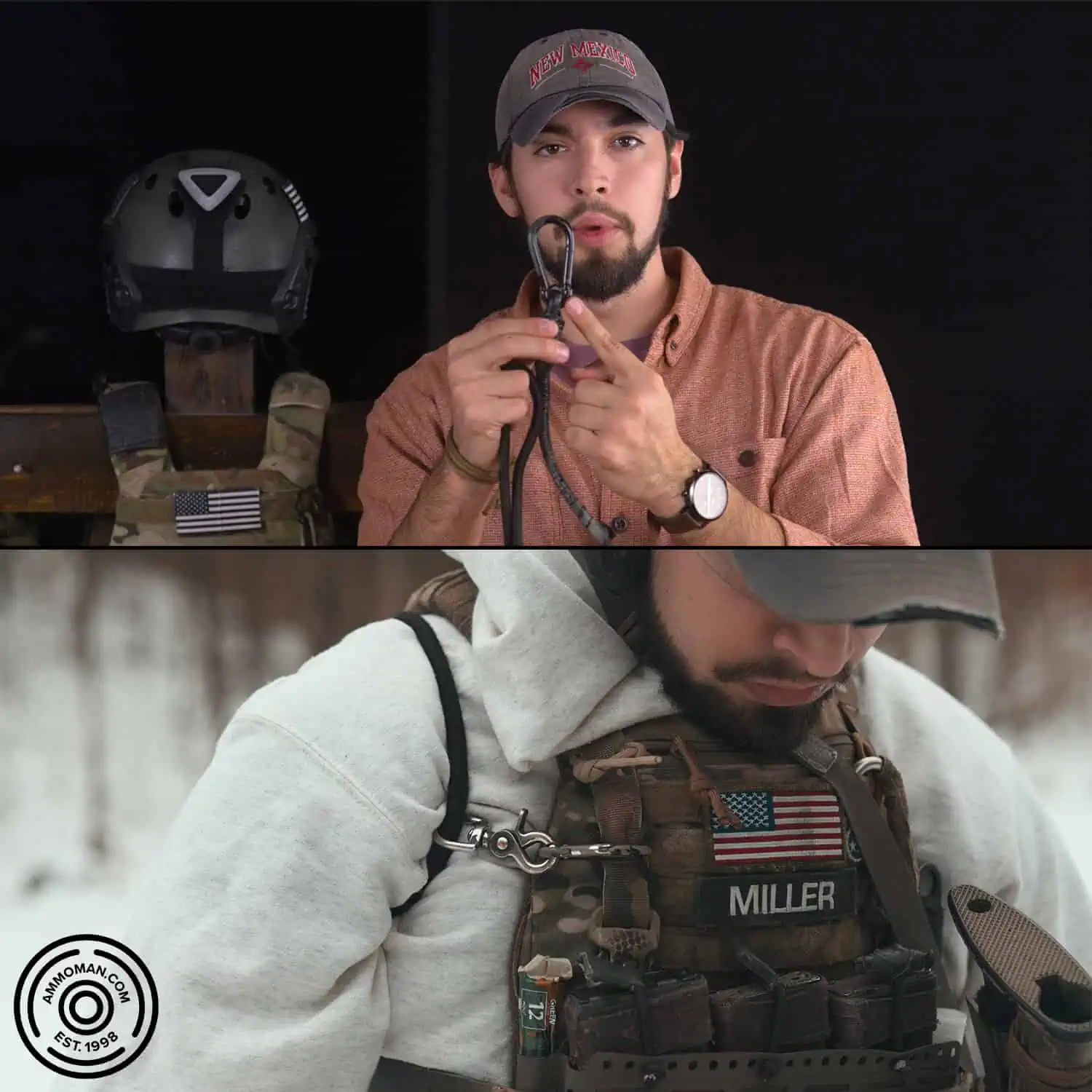
The reason I use a carabiner with a grommet is to ensure that the sling cannot loop back over itself and unlock the carabiner by accident. There are plenty of other options for the clasp as well. Feel free to use another carabiner, “HK” hook, or your favorite QD (Quick Detach) mount.
I like the heavy duty “lobster” style hooks. They are quick to throw onto a universal style ring on the shotgun or whatever it is that you’re trying to retain.
Making the Breaching Shotgun Retention Sling
This DIY sling has been around for decades and I learned how to assemble it from members of our Nation’s premiere raid force, The 75th Ranger Regiment.
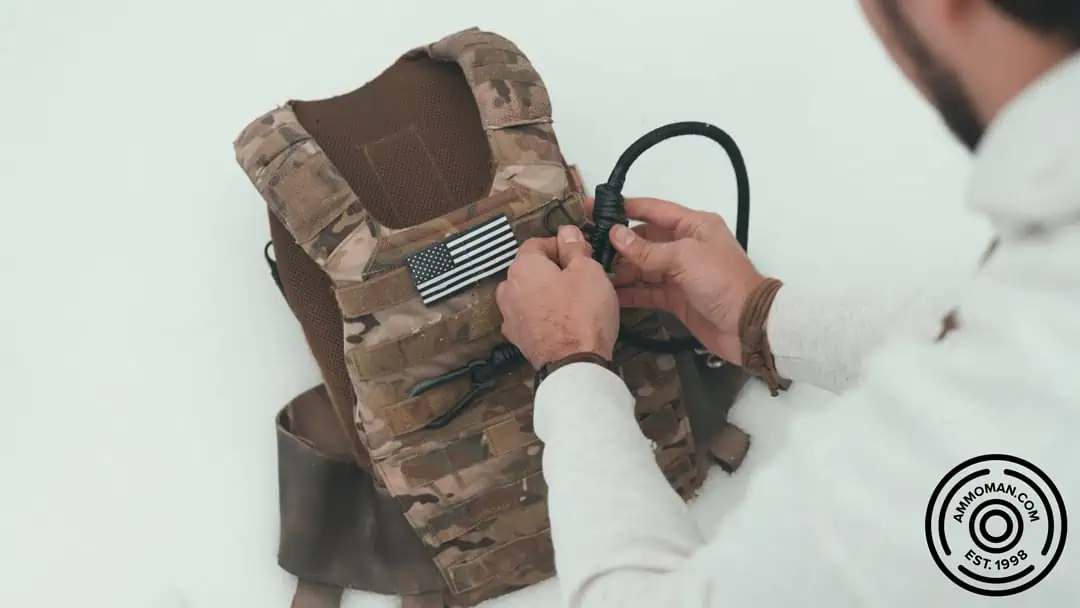
Assembly
In order to assemble the sling, remove the heads from the bungee cord and send one end through the grommet carabiner and tie a stop-knot at the end so it doesn’t slip through.
Next, make sure to add whatever clasp you want.
The last step is to tie a loop large enough to fit your arm through and secure it in place with a knot and some tape for extra security. The only limiting factor is that you will have to mount it to your place carrier. Take the end with the carabiner and thread or clip it on your plate carrier using the “MOLLE” webbing on the back. 
Once the sling is on, it will rest on your shoulder without interfering with your regular rifle sling. When you need to retain an extra weapon you simply grab the keychain and clip it onto however you would regularly mount a sling.

How to Wear and Use
With the retainer mounted and ready for use, all you have to do is decide what weapon system you want to carry on it.
In the images, I’m showing a breaching shotgun for the example since that’s the most common use case. When not in use, I find that putting the clasp on the front helps to keep it from becoming a hot spot or falling off the shoulder. 
Retention Types
When you are stowing the shotgun, (or other platform) simply place it behind the shoulder. There are multiple ways to stow the shotgun using both active or passive retention devices. Of course, it can hang free which is useful if you anticipate using the shotgun frequently or need immediate access. Where it will become a problem is moving around or changing positions. If it is moving freely, you won’t be able to maintain control over it from swinging, banging on gear and getting in the way.
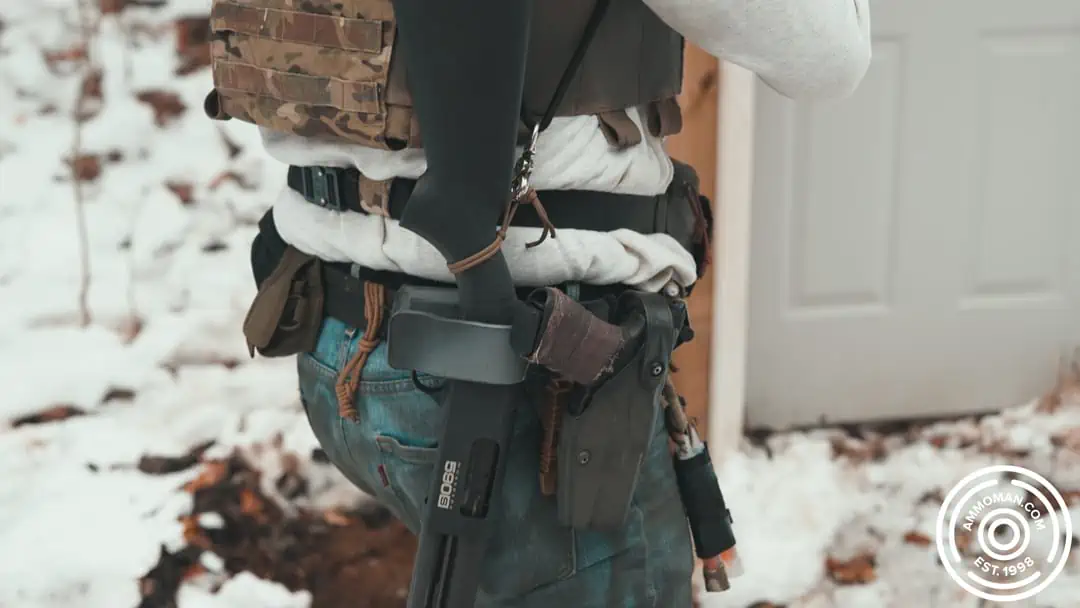
Passive
I would recommend at a minimum having some sort of passive retention. A weapons catch on the belt line works well. This will make it far more reliable to move around without the shotgun swinging around, yet still being quickly accessible.
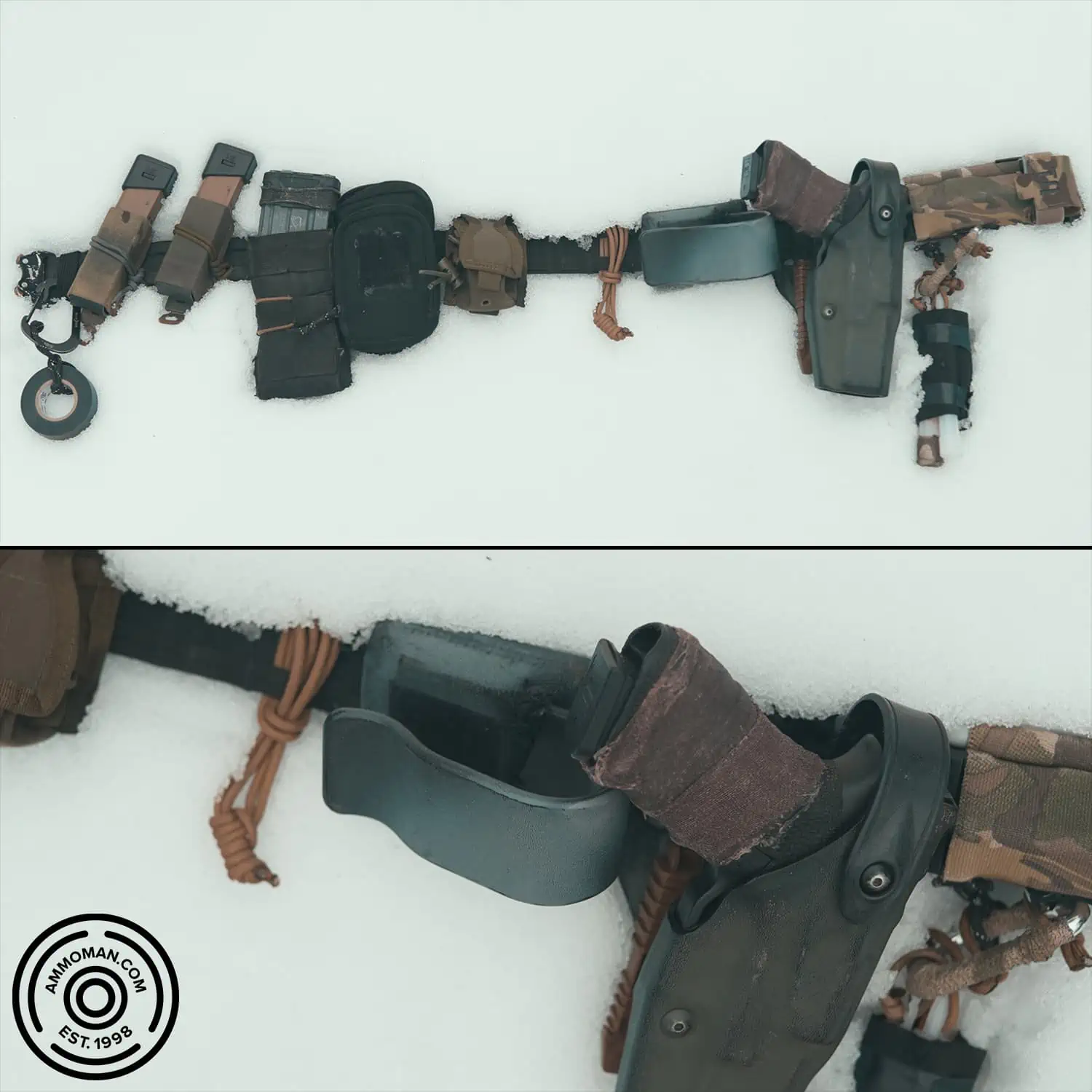
Active
If you need more retention, add shock cord or a velcro strap to your belt. This holds the shotgun in place until ready for use. Some experienced individuals use magnets on their plate carriers in order to supplement a belt worn retainer as a passive solution. As long as you have a hard and fast active retention device you’ll be okay. Just be sure to work out the kinks as much as possible prior to live-fire training.
Shotgun Use in Combat
Documented use of the shotgun in American combat arms is easily traced to WWI but was in fact used far prior to what we think.
Historical Use
Shotguns like the Winchester 1897 were used during the Philippine-American War of 1899-1902 when many of the current issued weapons were proven to have lackluster effects against adversaries in the Philippines. Even earlier, the blunderbuss was used predominantly by piracy crews for overtaking merchant ships. Having the capability to launch multiple lethal projectiles in one firing sequence was incredibly devastating. It increased the overall force one individual could present during a conflict.
Modern Use
Since those days, the use of shotguns has not slowed down, but rather shifted its employment in modern combat and law enforcement. Shotguns are more specialized both in the actual systems and the rounds that are made for them.
Law Enforcement
Law enforcement often utilizes specialty ammo like the “Less-Lethal” pepper rounds, as well as beanbags, rubber slugs and a myriad of other custom rounds. Their purpose range from riot control to subduing armed suspects and even hostage rescue!
Military, Special Forces and Other Elite Units
In the US military, soldiers from Infantry divisions all the way up to Special Forces and Special Operations Forces use shotguns primarily for ballistic breaching. The systems they use are customized to be compact, lightweight and easy to maneuver in and around tight spaces. Additionally, it needs to be usable under night vision. They will often times have specialized IR (infared) lights mounted on their shotguns. This helps them see where they are placing the muzzle on the door.
This application is where the breaching retention sling shines.
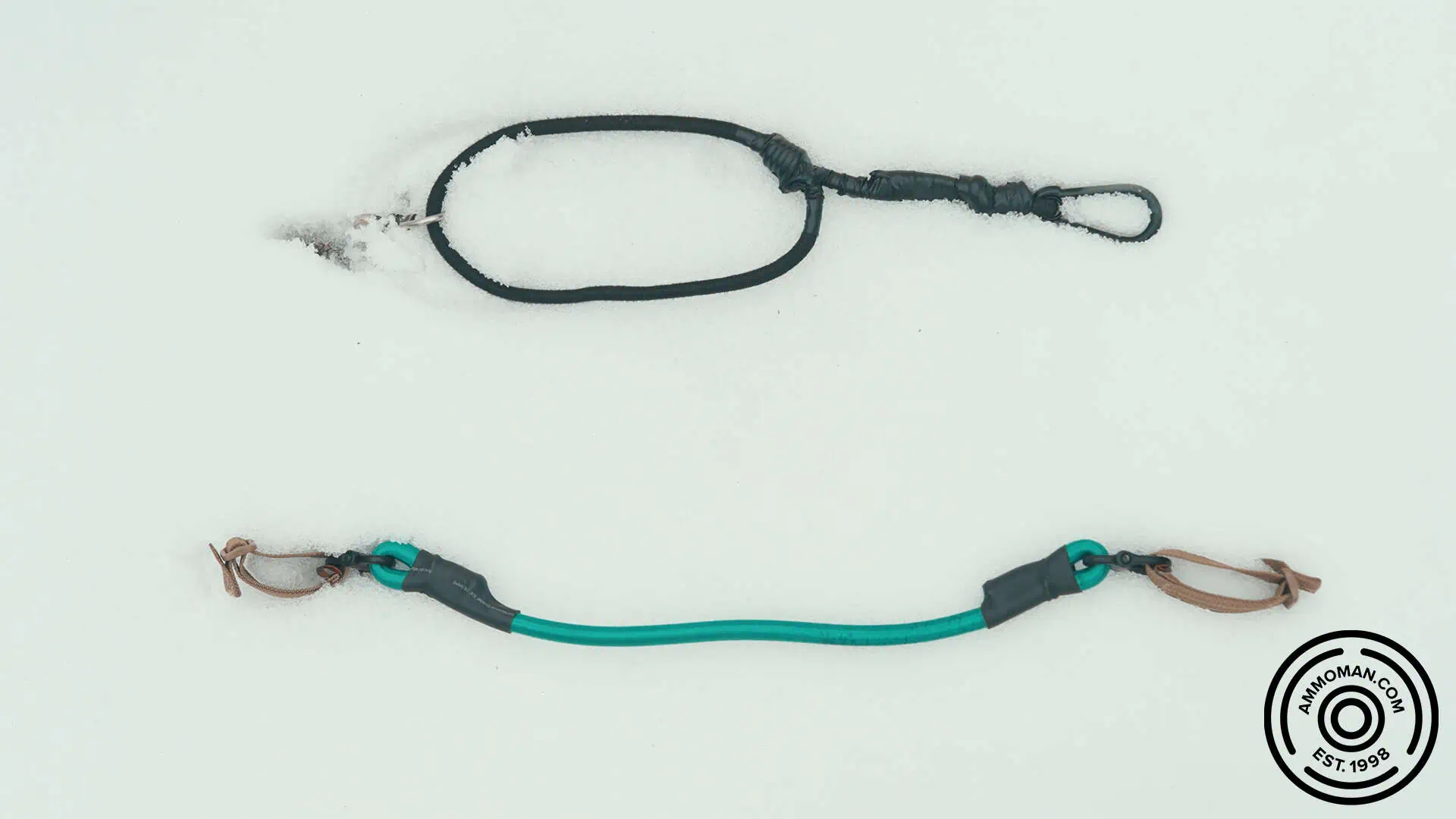
The sling pictured above (top/black) has been used actively in an elite unit up until this year. It was then modified and updated (bottom/green). I don’t have enough experience using the modified version so I omitted it from the article today. Members of this unit however, assured me that both work very well and serve the purpose of retaining a shotgun or another weapon for whatever use you may have.
As for the loads they use, the most common are specialized breaching rounds. The rounds will disperse all of the energy into whatever is immediately hit, and then break up into a relatively harmless dust after passing through the door. This ensures that soldiers do not harm anyone who may not be a target of interest on the opposite side of the door. Remember Rule Number 4 of firearms safety, “Know your target, foreground and background.” Picking specific angles to shoot and using breaching rounds dramatically decreases the likelihood of shooting someone who does not need to be shot.
Whether you use a shotgun professionally, just like the way it looks, or are just dreaming of finally getting a battlefield pickup, now you can go out and make a breaching shotgun retention sling for yourself!

